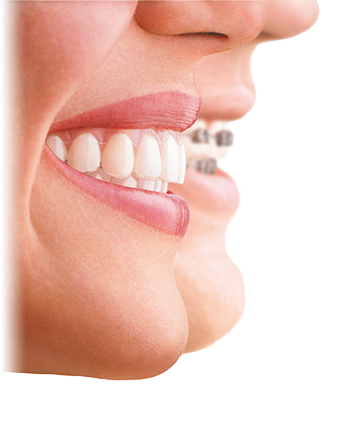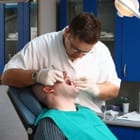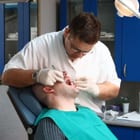 Tooth loss occurs for a number of reasons ranging from dental trauma to old age. Whatever the cause, loosing teeth can be a very embarrassing experience that can seriously affect your self-confidence and self-esteem. Missing teeth can also make eating very difficult and can cause long-lasting damage to the gums.
Tooth loss occurs for a number of reasons ranging from dental trauma to old age. Whatever the cause, loosing teeth can be a very embarrassing experience that can seriously affect your self-confidence and self-esteem. Missing teeth can also make eating very difficult and can cause long-lasting damage to the gums.
Hollows left by one or several missing teeth can be breeding grounds for bacteria because they are difficult to clean with conventional brushes and can cause damage to existing teeth. Several missing teeth can also cause irreversible damage to facial tissue. Because teeth act as rigid supports for muscles, if they are missing, the facial tissue starts to sag giving a sunken and unhealthy appearance.
One option for patients with missing teeth is dentures or partial dentures. Partial dentures are used when only several teeth are missing to prevent movement and support facial tissue. Whole arc dentures are used when there are no teeth left in the dental arc. They are generally fabricated from acrylic resins with porcelain artificial teeth.
Dentures should be held in place by suction alone but this is often not possible due to gum erosion. Many patients are anxious about dentures falling out and resort to dental adhesives and strips. These can prevent patients from eating certain foods and can be very messy. More and more patients are now opting for mini implants which can be used to secure the dentures with snap on and off clips. These provide the extra level of security many denture wearers need without the fuss and mess and can make a big different to the patients life.
Dentures need to be looked after just like real teeth and should be cleaned with a brush twice a day. Dentures are also taken out at night and cleaned in water. It is also important to take good care of your gums when wearing dentures as they can often become inflamed or eroded. Visiting a dentist every six months is strongly advised.
If you are suffering from multiple tooth loss and would to regain the use and appearance of a healthy set of teeth, make an appointment to see a Central Leeds dentist and ask about the benefits of dentures.





 Many forms of dental surgery involve the dentist having an accurate three-dimensional image of the patient’s teeth and gums. In the past this involved making several dental moulds and using them in tandem with conventional x-ray. These would take several days to develop and cast and increased waiting times for all appointments and treatments for all patients.
Many forms of dental surgery involve the dentist having an accurate three-dimensional image of the patient’s teeth and gums. In the past this involved making several dental moulds and using them in tandem with conventional x-ray. These would take several days to develop and cast and increased waiting times for all appointments and treatments for all patients. Chewing gum is the world’s most popular habit with an incredible 100,00 tons of it being chewed each year. Previously thought of as an unpleasant habit, the traditional image of chewing gum as a nuisance that was stuck under tables and on pavements everywhere is beginning to change.
Chewing gum is the world’s most popular habit with an incredible 100,00 tons of it being chewed each year. Previously thought of as an unpleasant habit, the traditional image of chewing gum as a nuisance that was stuck under tables and on pavements everywhere is beginning to change. Look after your teeth and they will last a lifetime. So the saying goes, and there really is a lot of truth in it. Caring for your teeth involves making only small sacrifices but just these few preventative measures could prevent years of misery caused by dental decay and other associated dental problems. Having problems with your teeth is no laughing matter as anyone who has had a root canal procedure will tell you but can easily be avoided by following a few simple rules.
Look after your teeth and they will last a lifetime. So the saying goes, and there really is a lot of truth in it. Caring for your teeth involves making only small sacrifices but just these few preventative measures could prevent years of misery caused by dental decay and other associated dental problems. Having problems with your teeth is no laughing matter as anyone who has had a root canal procedure will tell you but can easily be avoided by following a few simple rules. The last fifty years has seen incredible progress in the use of technology in all fields. This advance can be studied in microcosm in the world of dentistry. The dentist’s surgery today is unrecognisable from the surgeries of fifty or even twenty years ago. Modern surgeries are more like health spas than hospitals and the equipment and technology available mirrors this change.
The last fifty years has seen incredible progress in the use of technology in all fields. This advance can be studied in microcosm in the world of dentistry. The dentist’s surgery today is unrecognisable from the surgeries of fifty or even twenty years ago. Modern surgeries are more like health spas than hospitals and the equipment and technology available mirrors this change. People of a certain age will naturally respond with a shudder at the thought of braces. The unseemly and uncomfortable fixed metal brackets that made it impossible to eat certain foods, made eating normal food messy and worst of all, made you stand out a mile off. Being forced to wear a brace in your teenage years, because that is when braces are most effective, always seemed like some sort of cruel irony, but luckily for this and future generations, orthodontic treatment has definitely changed.
People of a certain age will naturally respond with a shudder at the thought of braces. The unseemly and uncomfortable fixed metal brackets that made it impossible to eat certain foods, made eating normal food messy and worst of all, made you stand out a mile off. Being forced to wear a brace in your teenage years, because that is when braces are most effective, always seemed like some sort of cruel irony, but luckily for this and future generations, orthodontic treatment has definitely changed. Ankylosis is a condition in the mouth that occurs when a tooth fuses with the jawbone preventing it from erupting at the normal rate. It is a fairly common condition seen mostly in the lower molars but its exact causes are unknown. The ankylosed tooth does not emerge properly, giving it a submerged appearance which also causes other teeth to emerge in incorrect positions.
Ankylosis is a condition in the mouth that occurs when a tooth fuses with the jawbone preventing it from erupting at the normal rate. It is a fairly common condition seen mostly in the lower molars but its exact causes are unknown. The ankylosed tooth does not emerge properly, giving it a submerged appearance which also causes other teeth to emerge in incorrect positions. Treatment usually involves being assessed by a dentist, during a preliminary appointment to judge suitability. Once this has been established, a dentist will fit the Six-Month braces, manufactured in the special Six-Month laboratory in the United States. The braces require short ten to fifteen minute appointments with the dentist every month for tightening and adjustment. Like most orthodontic procedures, Six-Month braces will be slightly uncomfortable at first but his will usually pass within the first week. After that the braces rarely cause any further discomfort to wearers.
Treatment usually involves being assessed by a dentist, during a preliminary appointment to judge suitability. Once this has been established, a dentist will fit the Six-Month braces, manufactured in the special Six-Month laboratory in the United States. The braces require short ten to fifteen minute appointments with the dentist every month for tightening and adjustment. Like most orthodontic procedures, Six-Month braces will be slightly uncomfortable at first but his will usually pass within the first week. After that the braces rarely cause any further discomfort to wearers. No dental surgery is more feared than the dreaded root canal treatment. The sound of the dentist drill is synonymous with this eye-watering procedure. That’s the perceived impression anyway, but the reality is somewhat different. A root canal treatment is one of the most important procedures in dentistry. It can make the difference between saving a tooth and losing it. More importantly, if you ask anybody who has suffered form an infected tooth, they will tell you just how painful it can be and how much of a relief it is when a root canal brings an end to that pain. So ignore the drill and the horror stories and give the root canal a little credit.
No dental surgery is more feared than the dreaded root canal treatment. The sound of the dentist drill is synonymous with this eye-watering procedure. That’s the perceived impression anyway, but the reality is somewhat different. A root canal treatment is one of the most important procedures in dentistry. It can make the difference between saving a tooth and losing it. More importantly, if you ask anybody who has suffered form an infected tooth, they will tell you just how painful it can be and how much of a relief it is when a root canal brings an end to that pain. So ignore the drill and the horror stories and give the root canal a little credit. The stigma that has been attached to wearing dentures over the years is gradually disappearing. As they become better manufactured and more lifelike, many denture wearers now go through life without anybody ever knowing they are wearing them.
The stigma that has been attached to wearing dentures over the years is gradually disappearing. As they become better manufactured and more lifelike, many denture wearers now go through life without anybody ever knowing they are wearing them.

